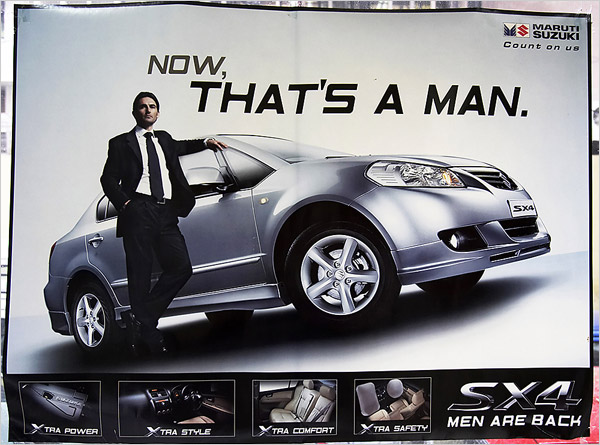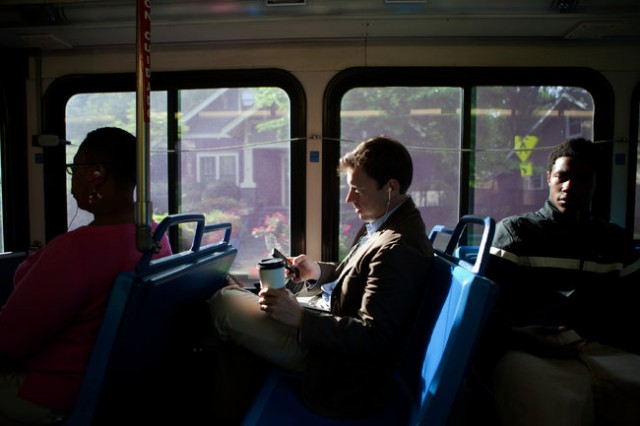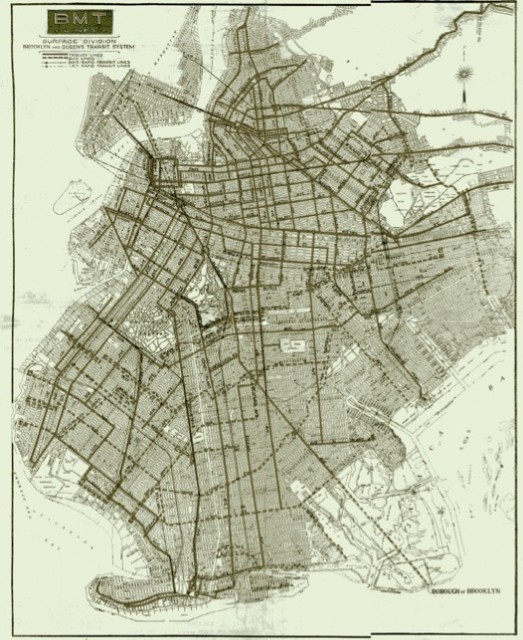
Gushers of cheap oil have long shaped essential American ideas and the resulting American landscape. But as climate impacts become apparent, and supplies become more expensive to extract, the oil era will end. Eric Sanderson describes where we can go next in his new book Terra Nova: The New World after Oil, Cars and Suburbs. You can hear Sanderson, a wildlife ecologist by background, and a brilliant explainer, describe what prompted him to study America’s history with oil in this conversation on WNYC (with Leonard Lopate):
And you can read an excerpt of the book here.
Both at the end of his previous book, Mannahatta, and as a theme in his new book, Sanderson professes his love of an earlier mode of transportation, streetcars, which were common across the country before the tracks were ripped up and American cities became dominated by the automobile.
Streetcars also appeared in an astonishing recent post at Atlantic Cities. New Yorkers, and particularly Brooklynites perplexed over how to get across the borough from Prospect Heights to Williamsburg, or from Windsor Terrace to Flushing in Queens, can only look with envy at a map showing the density of trolley routes that once crisscrossed the boroughs and linked them to each other:
The new discussion of streetcars, and the influence of oil, is a reminder of how prophetic Hollywood has been. Who Framed Roger Rabbit (1988) was perhaps the first pop who-dun-it about the influence of industry on the removal of trolleys, and the shape of cities. Equally intriguing — when considered together — are two films released in 1973: American Graffiti, George Lucas’ nostalgic look back at the automotive Eden of his youth, California in the early 60’s, and Soylent Green, an early Hollywood eco-disaster flick made in the same year, set in 2022.
Eric Sanderson foresees a brighter future as we inevitably turn our skills to solutions for this next round of problems: we are, after all, nature’s greatest problem-solvers. (As they might say on The Simpsons, also nature’s greatest problem-causers, but the two probably go together.) Sanderson is now at work on a new interactive site to complement his Welikia project about the ecological history of New York City. The new site, slated to go online to the public in September of 2013, is encouragingly titled Mannahatta 2409, and will allow visitors to experiment with designs for the future city themselves, learning the costs and benefits of each approach through an accurate data-driven dashboard. Streetcars are a possibility.


India (source of Maruti billboard above) and China are following America’s pattern and becoming the biggest markets for cars, even as young people in the US show signs of losing interest in the personal automobile. (photo: NYT)

Links to reporting on the growth of cars in other countries: China; India
And changed perception among young people in the US: “Young Americans Lead Trend to Less Driving” (NYT, 5/13/13); “Millennials choose computers and phones over cars” (City Atlas, 3/11/13)
